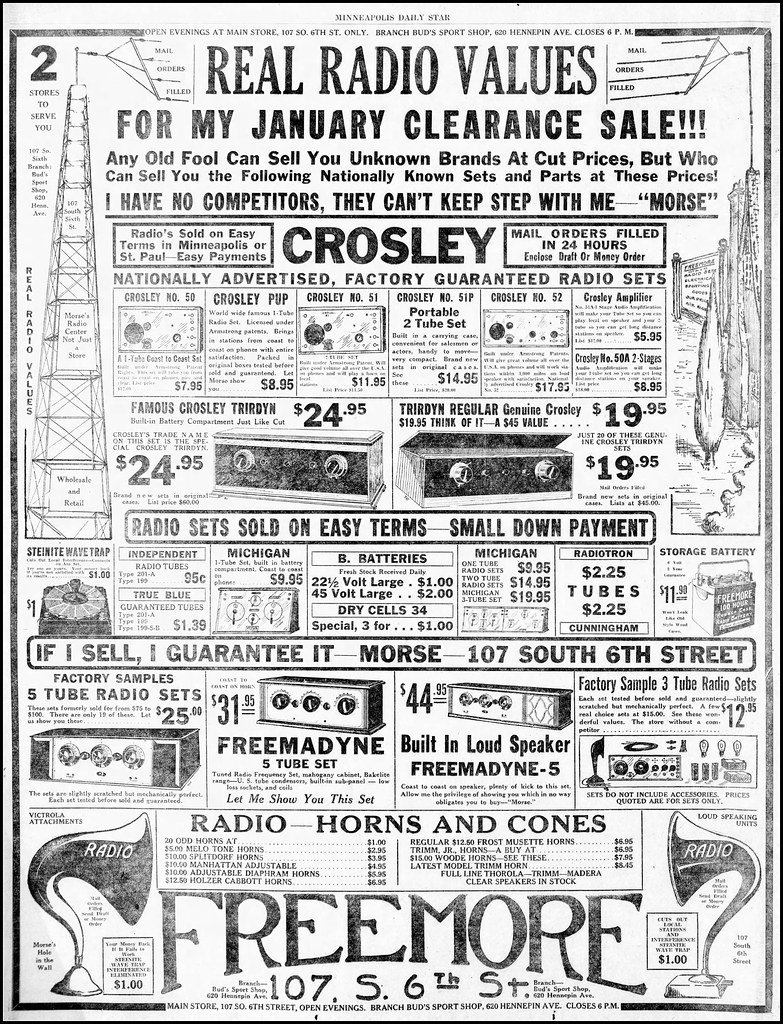
Food and Drug Administration regulates drugs and food in the United States. The agency's mission includes protecting the public from unsafe products and ensuring the safety of medications and medical devices. It is a regulatory body that was established in the beginning of the twentieth century. However, drug advertising regulations were not modified until the 1960s.
Although the FDA is a significant body, it's not the only authority when it comes to drug advertising regulation in the United States. Many countries around the world have prohibited or restricted drug ads.
The FDA does not prohibit direct advertising of prescription medicines in the United States. However it does require all advertisers comply with certain rules. These rules include not claiming specific medical benefits or exaggerating side effects and not providing misleading information. Moreover, drug companies must provide full disclosures of any and all risks and benefits of their products.

TV ads are one way drug companies can convince people to take their medication. These advertisements often include clever video productions and music designed to get people excited about the drug. They often offer the opportunity to ask your doctor about the product. This can be a powerful way for people to make a purchase of expensive medicines.
Merck's Vioxx, an Anti-Inflammatory Drug from Merck, was earning $2.5B in annual sales by 2000. It was promoted in a 60 second spot featuring figure skater Dorothy Hamill. Merck was allowed to market the drug, but the FDA couldn't stop it. Because the company had to demonstrate that it could provide "substantial proof" that the drug was effective.
The American Medical Association also opposes drug commercials. It claims that they increase the risk of people taking expensive medications and cause them to switch to lower-priced brands. Pharmaceutical companies claim that these advertisements help them develop new medicines and that they don't want people to be scared off expensive medicines.
The FDA's ad rule is not as rigid as it once was. In fact, some of the agency's policies have been relaxed, especially in regard to TV ads. Before the study was conducted, the FDA only required companies to disclose certain details when advertising. A television advertisement for a particular drug must have a 1-800 phone number in order to be broadcast. An FDA requirement was that the ad include a list of all possible adverse effects.

Recent research examined the effects of anti-drug TV ads on middle and high school students. The researchers looked at the relationships between anti-drug TV ads and drug use, attitudes towards drug use and beliefs about the risk of using drugs. The results varied by grade.
Students in high school were more likely than students in middle school to remember anti-drug advertisements. The average number of youth exposed to anti-drug TV ads was significantly lower than it was in 1995. Furthermore, there was a significant correlation between recall of anti-drug television advertisements and marijuana-focused anti-drug advertising. It was also evident that there was a strong association between the amount and substance use attitudes of youth exposed to anti-drug advertisement on television.
FAQ
What should you know about TV advertising?
Television advertising has the potential to reach large audiences at once. It was also expensive. However, it can be powerful if you use the device correctly.
Although there are many kinds of TV ads to choose from, all share the same characteristics. It is important to make sure that your TV ad fits into the appropriate category. Don't confuse a lifestyle ad with a product advertisement if you are running a commercial. Your message should be consistent throughout the entire campaign.
A second important thing to keep in mind is that prime-time hours is the best time to air ads. This is because viewers tend to watch TV while sitting down in front the television. They should be able to concentrate on what you are saying.
The bottom line is that even if you have a lot to spend, it doesn't necessarily mean you'll be able to get great results. The opposite may actually be true. According to a University of California study, commercials that aired on popular TV shows had lower sales than those that aired on unpopular programs. You should ensure that you spend your money wisely if you plan to advertise on television.
What do you need to know about print advertising?
Print advertising is a good medium to communicate effectively with consumers. Print advertising is used by many companies to promote their products and services. The key objective is to capture the attention of the consumer.
Print ads are usually one-page long. They contain text, images, logos, and any other graphics. These ads may include sound, animation and video as well as hyperlinks.
The following categories are the most common types of print advertisements:
1. Brochures - Large format printed brochures are used to draw people in to stores. They often have colorful pictures and eye-catching designs.
2. Catalogues - These are smaller versions of brochures. They are sent to customers who have requested specific information.
3. Flyers - These are small pieces of paper distributed at events such as concerts and fairs. If they are given out at retail outlets, they can be obtained for free, but you must pay for them.
4. Flyers are also available in posters. They are often displayed on walls, fences, or buildings. These are often created with computer software programs to grab the attention of passersby.
5. Direct mail – These are direct mail letters and postcards sent to potential customers. These are sent to customers periodically by businesses to remind them about their business.
6. Newspaper Ads – These are ads that appear in newspapers or magazines. They are usually quite long and contain both text and images.
What should you know about internet marketing?
Internet advertising is an integral part of any business strategy. It allows companies reach potential customers at a very low cost. There are many forms of internet marketing. Some are free and some require payment.
You can also advertise online using banner ads, pop up ads, search engine optimization, pay-per-click advertisements (PPC), social media marketing (e-mail marketing), and mobile marketing. Each method offers its own advantages and disadvantages.
How can I select my target audience?
Start with yourself and those close to you. If you don't know where to begin, ask yourself, "who am I trying to reach?"
Ask yourself these questions. Who are the most influential people within my industry? What are their biggest challenges? Who are my top-ranking people? They hang out online.
Go back to the beginning when you started your business. Why did you begin? What was your problem and how did it solve?
These questions will enable you to identify your ideal client. These answers will help you understand your ideal clients and what motivates them to buy from you.
To get clues about who they cater to, you can also check out your competitors' social media pages and websites.
Once you have identified the target customers, it is time to decide what channel(s) you want to use to reach them. A website might be created to reach home buyers, for instance, if your business provides services to agents in real estate.
A blog could be created if your software is offered to small businesses.
If you sell clothing, you can create a Facebook fan page for teens. For parents who are looking for child-friendly restaurants, you might set up your own Twitter account.
You have many options to convey your message.
What is an advertisement buyer?
An advertiser purchases advertising space on TV, radio or print media.
Advertisers pay for the time their message appears.
They don't necessarily want the best ad, but they are more interested in what is most effective at reaching their target audience.
Advertisers may have demographic information such as the age, gender, marital status, income level, occupation, hobbies, and interests of their customers.
This information can be used by advertisers to decide which media works best for them. They may decide that direct mail works better with older people.
Advertisers also look at the competition. If there are similar businesses nearby, they might choose to place their ads near those competitors.
Advertisers must also take into account the size of their budget as well as the time it will take to spend the money before it expires.
What is radio advertising?
It is important to understand the interdependence of different media types. It is important to understand that all media forms are complementary and not competitive.
Radio advertising can be extended to television. It can reinforce key messages and provide additional information.
Radio listeners often find TV commercials too lengthy. Radio ads are usually shorter and less expensive.
What is affiliate market?
Affiliate marketing is an online business model where you earn commissions by referring customers to products and services sold on other websites. The product owner pays you when someone buys from you.
Affiliate marketing relies on referrals. You don't have to do anything special for people to buy from you. All you need to do is refer them to the website.
You don't have to sell anything. Selling is as easy as buying.
It takes just minutes to set up an account as an affiliate.
Referring more people will result in more commission.
There are two types of affiliates:
-
Affiliates who own their websites
-
Affiliates that work for companies offering products and services.
Statistics
- Nonetheless, advertising spending as a share of GDP was slightly lower – about 2.4 percent. (en.wikipedia.org)
- Advertising spending as a share of GDP was about 2.9 percent. (en.wikipedia.org)
- In 1919 it was 2.5 percent of gross domestic product (GDP) in the US, and it averaged 2.2 percent of GDP between then and at least 2007, though it may have declined dramatically since the Great Recession. (en.wikipedia.org)
- Google will display whichever ad type (CPM or CPC) is expected to earn more revenue for the publisher, which is in Google's best interest since they take a 32% share of the revenue. (quicksprout.com)
External Links
How To
How to make Sponsored Ads on Facebook
Facebook is one of most-used social networking sites. The global population is 1.79 billion. The number keeps growing every day.
Facebook is free, but you have to pay if you want to reach your audience directly. You have the option to use paid advertising options like banners and promoted posts.
Log in to your existing application if you have one. If not, click "Create New App". Next, follow these steps.
-
Click "Add Platform" in the Apps section.
-
Click Next, and select Advertising.
-
Please complete the form and submit it.
-
After approval you will receive a ClientID and Secret key. Copy them.
-
Paste the keys in the appropriate fields.
-
Select the currency and enter the name of the campaign.
-
Click on "Start Campaign"
-
Follow the instructions until the first banner appears. Copy the URL, then go back to your Facebook profile.
-
Paste the code into the box provided by Facebook.
-
Click "Save Changes".
-
Your ad should be now live!
-
For each additional banner that you wish to make, repeat steps 10-12.
-
Click "Continue" when you're done.
-
Create your final ad group.
-
Once you're done, click on "View All Ads", to view all of your campaigns.
-
Click the "Remove Advertisements" button next to any ad.
-
If your campaign is not producing results, make sure you have followed the instructions.
-
Check the date range you have chosen for your campaign.
-
You should set your budget in a sensible way.
-
Save your changes.
-
Review the settings for your campaign before clicking "Submit."
-
Wait for your ads to appear on your timeline.
-
Congratulations on a job well done!
-
Let's take a look at some ways to improve your results.